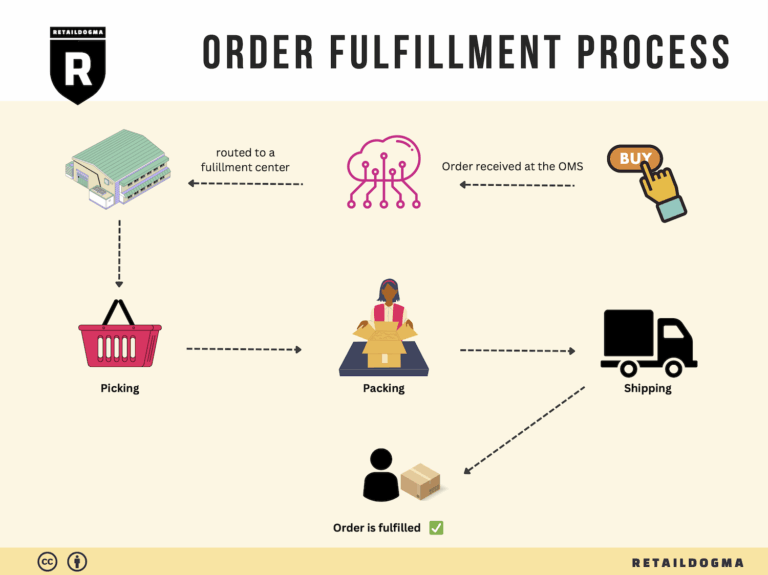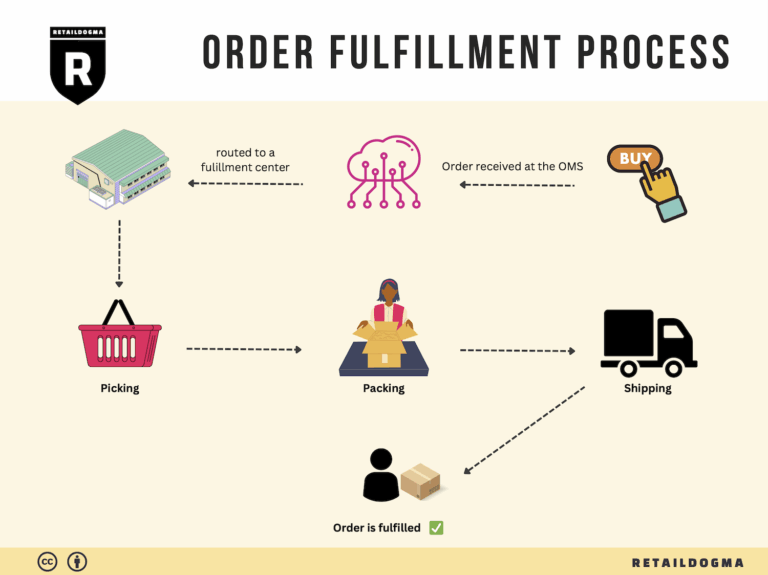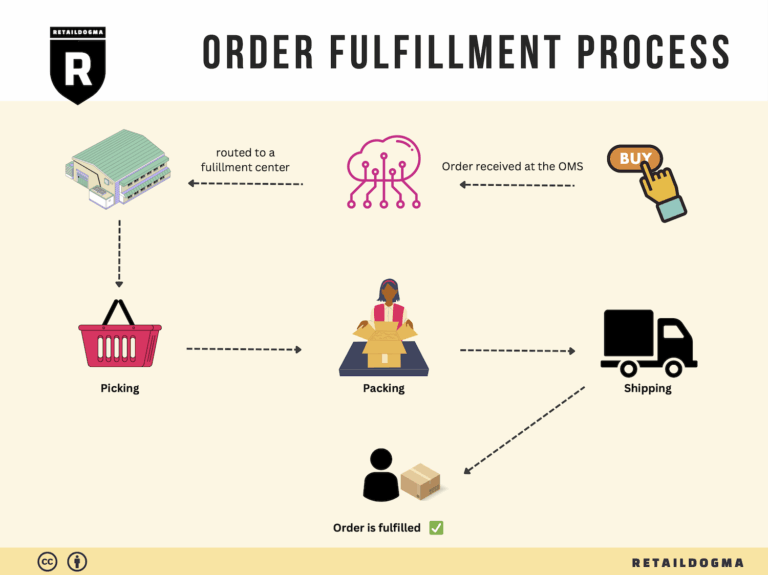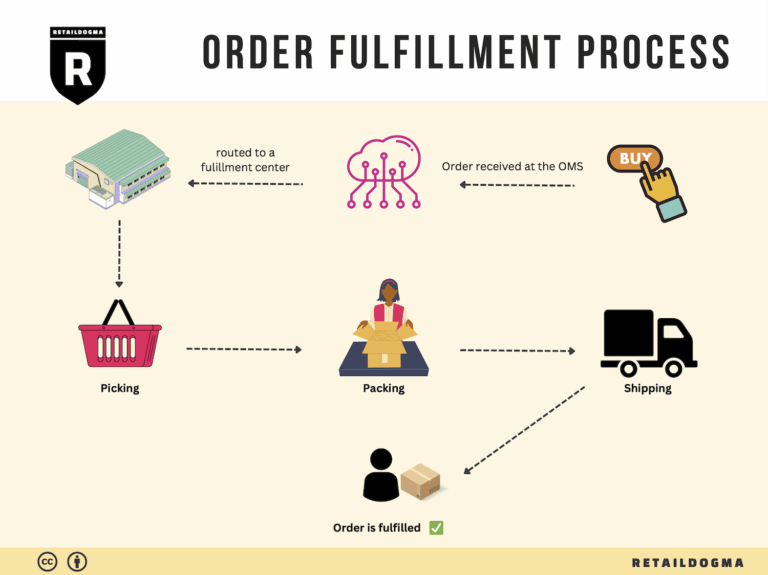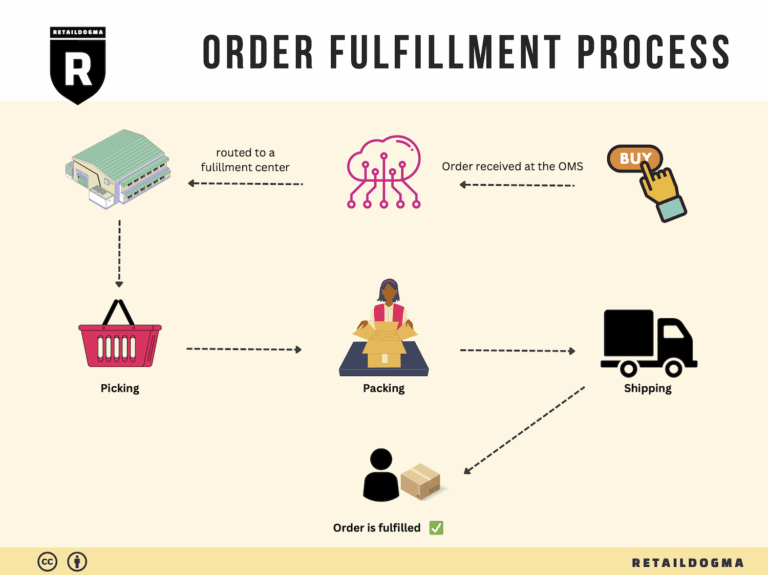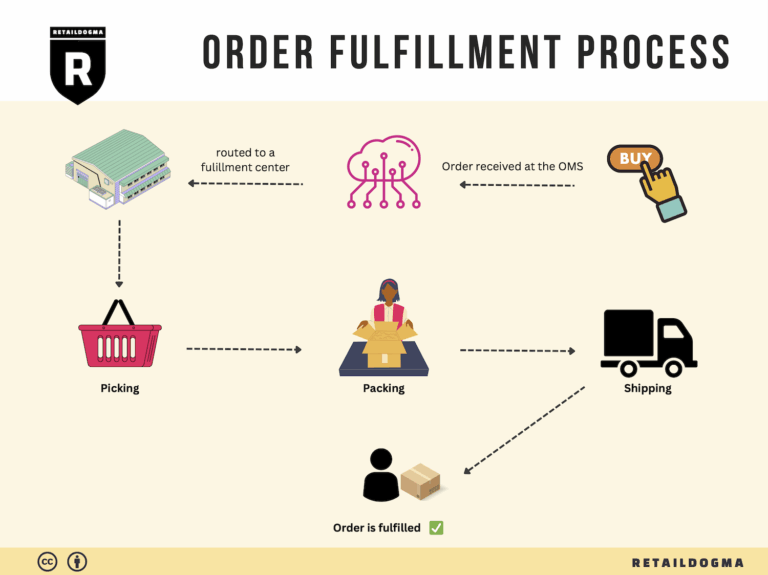How Order Fulfillment Works: A Step-by-Step Guide for Businesses
What is E-commerce Fulfillment? An Introduction for Growing Businesses
Understanding E-commerce Fulfillment
As your e-commerce business grows, the excitement of increasing sales can quickly turn into the stress of managing logistics. Many entrepreneurs find themselves overwhelmed with the complexities of packing and shipping orders, often leading to delays, errors, and customer dissatisfaction. This is where e-commerce fulfillment comes into play—a crucial aspect of your operations that can either propel your business forward or hold it back.
At its core, fulfillment is the process of getting a product from your shelves to your customers’ doorsteps. This involves various stages, including inventory management, order processing, packing, shipping, and handling returns. For growing businesses, mastering this process is essential for maintaining customer satisfaction and ensuring efficient operations.
In this guide, we will explore the different fulfillment models available to e-commerce businesses, such as Third-Party Logistics (3PL) and Fulfillment by Amazon (FBA). Each model offers unique advantages and can significantly impact your business’s scalability and operational efficiency.
We will delve into the core services that fulfillment partners typically provide, including:
- Storage and Inventory Management: How to effectively manage your stock to meet demand without overextending your resources.
- Order Processing: Streamlining how orders are received and fulfilled to ensure timely delivery.
- Packing and Shipping: Understanding the best practices for packing your products to minimize damage and optimize shipping costs.
- Returns Management: Efficiently handling returns to maintain customer trust and loyalty.
Choosing the right fulfillment partner is critical to your success. This guide will outline the key factors to consider when selecting a provider, such as their location, technology, scalability, and customer service. Additionally, we will discuss pricing structures so you can make informed decisions that align with your budget and growth objectives.
The ultimate goal of this guide is to empower e-commerce business owners like you to make smart, strategic decisions about your logistics. By understanding the ins and outs of e-commerce fulfillment, you can streamline your operations, enhance customer satisfaction, and set the stage for sustainable growth. Let’s dive into the world of fulfillment and discover how it can elevate your business to new heights.
What You’ll Learn In This Guide
- What is E-commerce Fulfillment? An Introduction for Growing Businesses
- The Order Fulfillment Process: From ‘Buy’ Button to Customer’s Door
- Comparing Fulfillment Models: In-House vs. 3PL vs. Dropshipping
- A Deep Dive into Amazon FBA: Pros, Cons, and Who It’s For
- Core Services Offered by Fulfillment Centers
- How to Choose a Fulfillment Partner: A 6-Point Checklist
- Understanding Fulfillment Pricing: A Breakdown of Common Fees
- Frequently Asked Questions (FAQs) about Fulfillment
- Conclusion: Is Outsourcing Fulfillment the Right Move for Your Business?
- Important Disclaimer
The Order Fulfillment Process: From ‘Buy’ Button to Customer’s Door
1. Receiving Inventory
The first step in the order fulfillment process is the receiving of inventory. When products arrive at the fulfillment center, they must be checked for accuracy and quality. This involves comparing the received items against the purchase orders and inspecting them for any damages.
Importance: Proper receiving is crucial because it ensures that the fulfillment center has the correct products in stock, which prevents future order discrepancies. If inaccuracies occur at this stage, it can lead to stockouts or overstock situations, negatively affecting customer satisfaction and operational efficiency.
Key Term: SKU (Stock Keeping Unit) – Each product is assigned a unique SKU, which helps in tracking inventory levels and managing stock efficiently.
2. Warehouse Storage
Once the inventory has been received and verified, the next step is warehouse storage. This involves placing the products in designated storage areas within the fulfillment center. Effective storage strategies, such as using shelving systems and bins, help in maximizing space and organizing products based on demand.
Importance: Proper warehouse storage is essential for operational efficiency. It reduces the time spent searching for items and minimizes the risk of inventory damage. Additionally, well-organized storage contributes to faster order processing times, which is critical in meeting customer expectations.
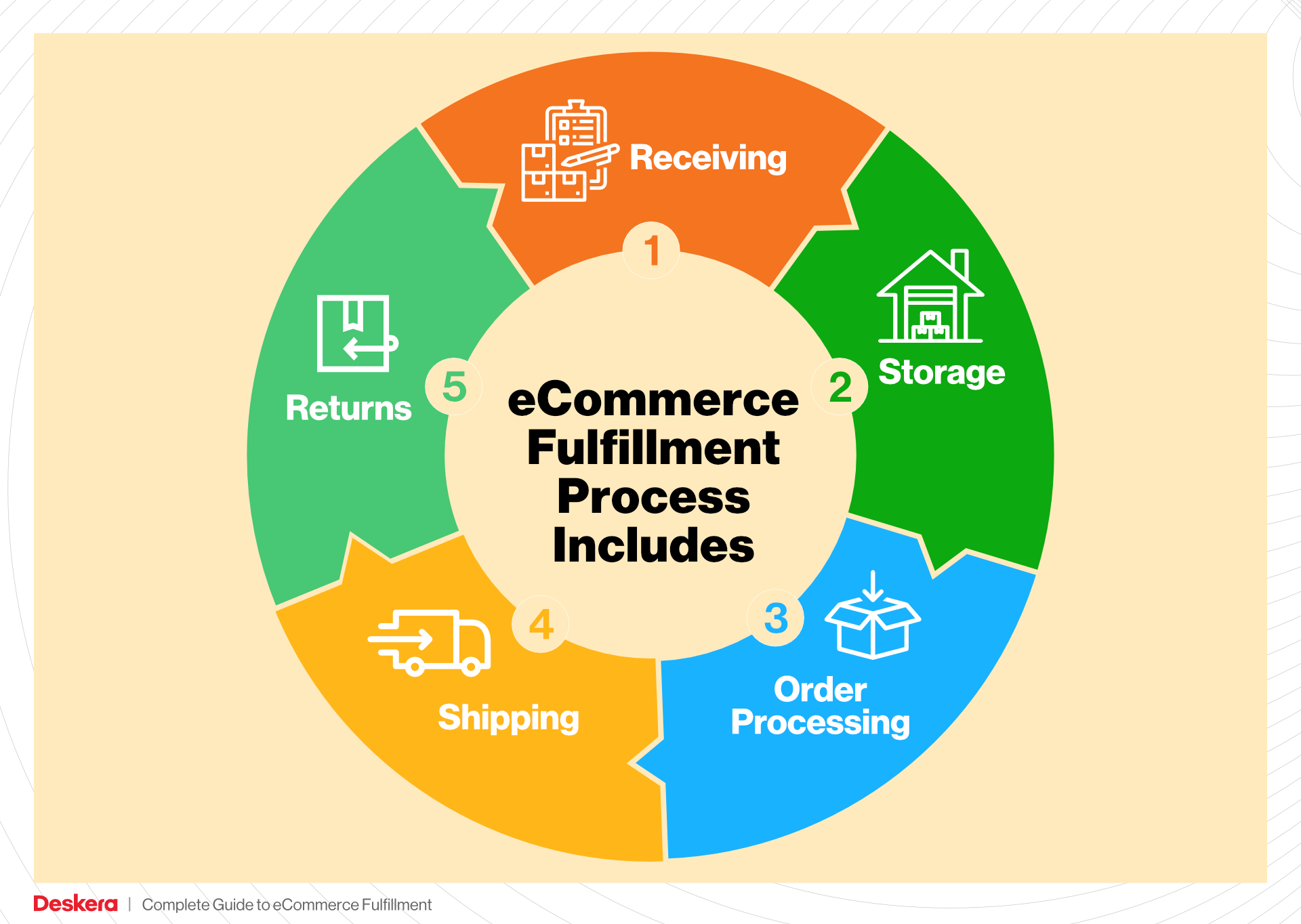
Key Term: ABC Analysis – This inventory categorization technique helps prioritize inventory management based on the importance of items, enabling better space allocation and resource management.
3. Order Picking
Order picking is the process of retrieving products from their storage locations to fulfill customer orders. This can be done using various methods, such as single order picking, batch picking, or zone picking. Utilizing technology, like pick-to-light systems or mobile scanners, can enhance the efficiency of this process.
Importance: Efficient order picking is vital for maintaining high levels of customer satisfaction. The faster and more accurately orders are picked, the quicker they can be packed and shipped. This step directly impacts delivery times, which are critical in today’s competitive e-commerce landscape.
Key Term: Pick Lists – These are documents or digital lists that detail the items to be collected for each order, guiding warehouse staff in the picking process.
4. Order Packing
After the items have been picked, they move to the packing stage. In this step, products are securely packaged to ensure they arrive at the customer’s door in pristine condition. This includes choosing the right packaging materials, adding protective padding, and labeling the package with shipping information.
Importance: Proper packing is crucial for reducing returns due to damages and ensuring a positive unboxing experience for customers. Additionally, effective packing can optimize shipping costs by minimizing package size and weight, which can significantly affect overall logistics expenses.
Key Term: Packing Slips – These are documents included in the package that list the items enclosed, providing customers with a reference for their orders.
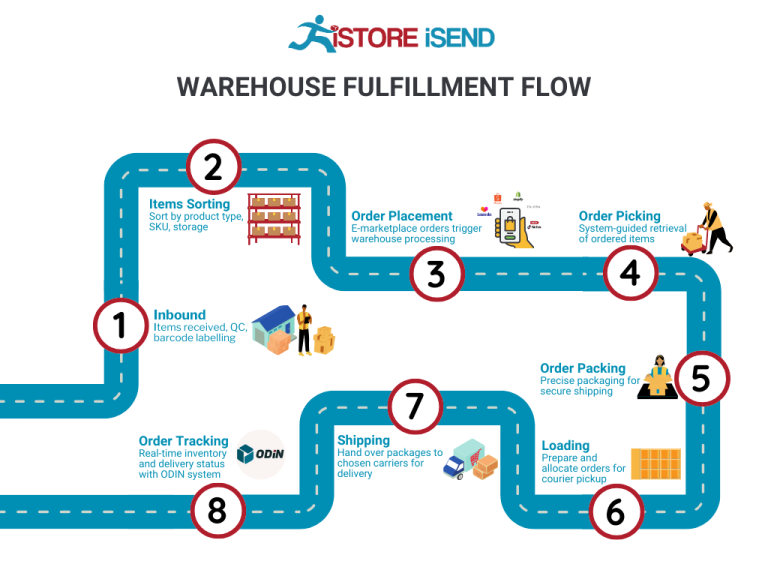
5. Shipping & Delivery
The final step in the order fulfillment process is shipping and delivery. This involves selecting the appropriate shipping carrier, generating shipping labels, and scheduling pickups or drop-offs. Once the package is on its way, tracking information is provided to the customer, allowing them to monitor their shipment.
Importance: The shipping and delivery stage is critical as it represents the last touchpoint between the business and the customer. Timely and reliable delivery can enhance customer loyalty and encourage repeat purchases. Conversely, delays or issues in this phase can lead to dissatisfaction and damage the brand’s reputation.
Key Term: Last Mile Delivery – This term refers to the final step of the delivery process, where the product is transported from the fulfillment center to the end customer. Optimizing last mile delivery is essential for improving overall delivery efficiency and customer satisfaction.
By understanding and optimizing each step of the order fulfillment process, e-commerce business owners and operations managers can enhance their logistics capabilities, reduce costs, and significantly improve customer satisfaction. This not only supports scaling efforts but also fosters long-term business growth.
Comparing Fulfillment Models: In-House vs. 3PL vs. Dropshipping
Fulfillment Models Overview
When scaling an e-commerce business, choosing the right fulfillment model is crucial. Each model has its strengths and weaknesses, which can significantly affect operational efficiency, customer satisfaction, and overall business growth. Below is a comparison of three prevalent fulfillment methods: In-House Fulfillment, Third-Party Logistics (3PL), and Dropshipping.
| Model | Who Handles Inventory | Best For (Business Stage) | Key Advantage | Key Disadvantage |
|---|---|---|---|---|
| In-House Fulfillment | The business itself | Established businesses | Full control over inventory and processes | High overhead costs and resource requirements |
| Third-Party Logistics (3PL) | A third-party provider | Growing businesses | Scalability and access to expertise | Less control over inventory and potential delays |
| Dropshipping | Supplier/Manufacturer | Startups or low-capital ventures | Low initial investment and minimal risk | Lower profit margins and reliance on suppliers |
In-House Fulfillment
In-house fulfillment refers to the process where a business manages its own inventory, storage, and order processing. This model is typically adopted by established companies that have the resources to maintain a warehouse and logistics team.
Key Advantages: The primary benefit of in-house fulfillment is the complete control it offers over inventory management, shipping processes, and customer experience. Businesses can customize their packaging, ensure quality control, and respond quickly to customer inquiries and issues. This model also allows for better data collection and analysis, which can inform future business strategies.
Key Disadvantages: However, in-house fulfillment comes with significant overhead costs. Expenses related to warehousing, staff, equipment, and technology can accumulate quickly. Additionally, as demand fluctuates, businesses may face challenges in scaling operations efficiently. Maintaining a skilled workforce and managing logistics can also be resource-intensive, requiring constant attention and investment.
Third-Party Logistics (3PL)
Third-party logistics (3PL) providers offer a range of services that include warehousing, inventory management, and shipping. Companies that choose this model outsource their logistics to specialized firms, allowing them to focus on core business functions like marketing and product development.
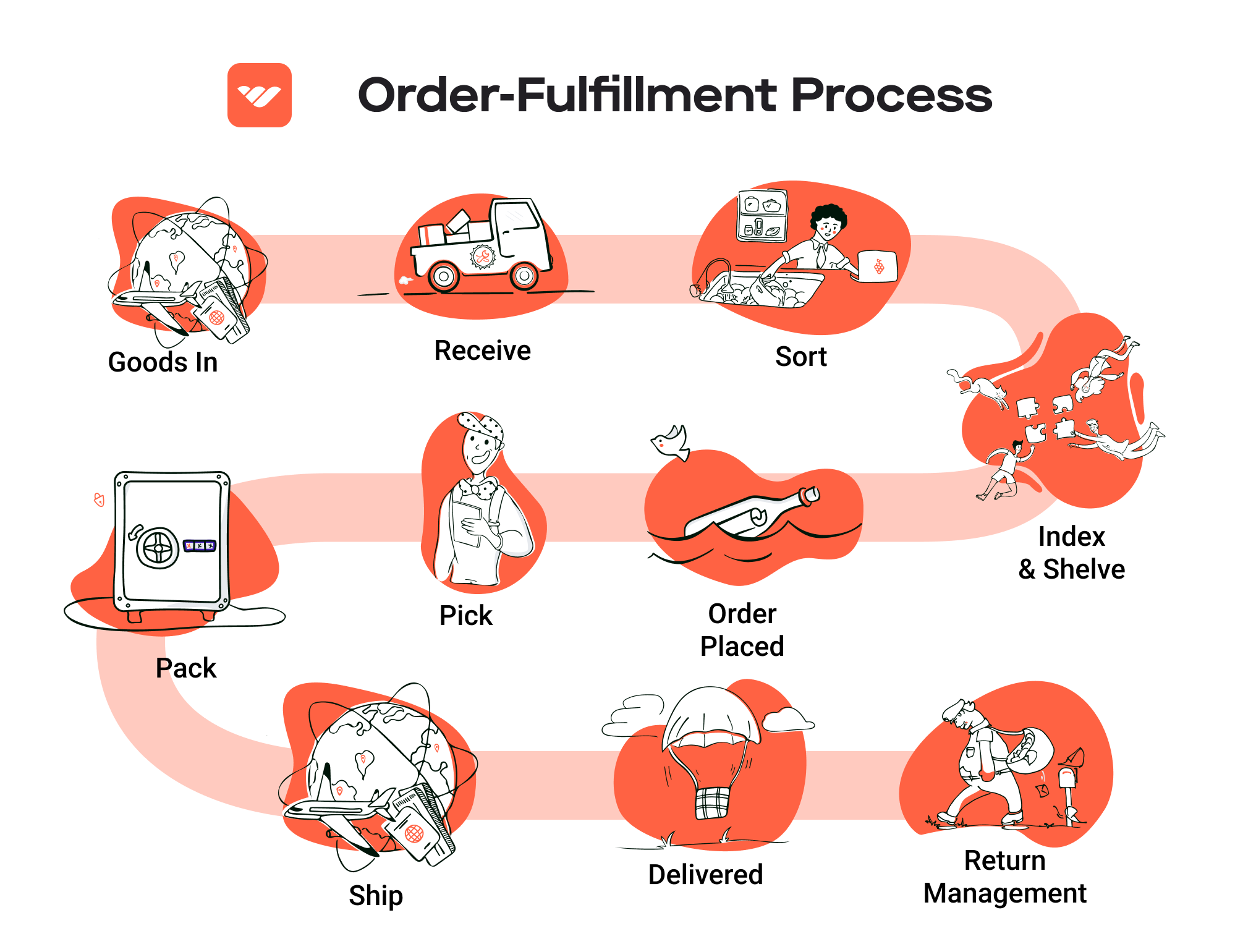
Key Advantages: One of the main advantages of using a 3PL provider is scalability. As a business grows, a 3PL can easily adjust to increased demand without the need for the company to invest in additional infrastructure. These providers often have established relationships with carriers and access to advanced logistics technologies, which can lead to cost savings and improved delivery times. Furthermore, businesses can tap into the expertise of logistics professionals who understand the complexities of supply chain management.
Key Disadvantages: On the downside, outsourcing logistics means relinquishing some control over inventory and fulfillment processes. This can lead to potential delays and issues with quality control if the 3PL does not meet the business’s standards. Businesses may also face challenges in communication and coordination, especially if the 3PL operates on a different schedule or has its own set of priorities.
Dropshipping
Dropshipping is a fulfillment method where a business sells products it does not keep in stock. Instead, when a business sells a product, it purchases the item from a third party (usually a wholesaler or manufacturer) who then ships it directly to the customer. This model is particularly popular among startups and entrepreneurs looking to minimize upfront investments.
Key Advantages: The most significant advantage of dropshipping is the low barrier to entry. Entrepreneurs can launch their e-commerce stores without investing heavily in inventory or warehousing. This model allows for a wide range of products to be offered without the financial risk associated with unsold inventory. Additionally, since the supplier handles shipping and logistics, business owners can focus on marketing and customer service.
Key Disadvantages: However, dropshipping also has its drawbacks. Profit margins tend to be lower compared to other models since suppliers take a cut of the sales. Moreover, businesses are highly dependent on their suppliers for inventory management and shipping, which can lead to inconsistencies in product availability and delivery times. This reliance can also impact customer satisfaction, especially if there are issues with order fulfillment or product quality.
Conclusion
Choosing the right fulfillment model is essential for scaling an e-commerce business effectively. In-house fulfillment offers control but at a higher cost, while 3PL provides scalability and expertise but may compromise control over logistics. Dropshipping presents a low-risk entry point for new businesses, but profit margins can be limited, and reliance on suppliers can pose risks. Understanding the nuances of each model will empower business owners to make informed decisions that align with their operational goals and market demands.
A Deep Dive into Amazon FBA: Pros, Cons, and Who It’s For
Understanding Fulfillment by Amazon (FBA)
Fulfillment by Amazon (FBA) is a service that allows sellers to store their products in Amazon’s fulfillment centers. Once a seller enrolls in FBA, Amazon takes care of the storage, packaging, shipping, and customer service for the seller’s products. This service leverages Amazon’s extensive logistics network to provide a seamless shopping experience for customers, making it an attractive option for e-commerce business owners looking to scale their operations.
How FBA Works
- Product Listing: Sellers list their products on Amazon and select FBA as their fulfillment method.
- Inventory Shipment: Sellers send their inventory to Amazon’s fulfillment centers. Amazon provides guidance on how to prepare and package products for shipment.
- Storage: Once received, Amazon stores the products in its warehouses until an order is placed.
- Order Fulfillment: When a customer orders a product, Amazon picks, packs, and ships the item on behalf of the seller.
- Customer Service: Amazon handles all customer inquiries, returns, and refunds related to the FBA orders.
- Payments: Sellers receive payments from Amazon for sales, minus any applicable fees, typically within a few days.
Pros of Amazon FBA
Prime Eligibility
One of the standout advantages of FBA is the ability for sellers to offer their products with Amazon Prime eligibility. This can significantly boost sales, as Prime members tend to prefer products that qualify for fast, free shipping. This not only increases visibility but also enhances the likelihood of purchase.
Customer Trust
Amazon is synonymous with trust and reliability in the e-commerce space. By utilizing FBA, sellers benefit from Amazon’s established reputation. Customers are more inclined to purchase from sellers who use FBA because they know they will receive their products quickly and have access to Amazon’s customer service for any issues.
Multi-Channel Fulfillment
FBA is not limited to Amazon.com. Sellers can use FBA to fulfill orders from other sales channels, including their own websites or other online marketplaces. This multi-channel fulfillment capability allows sellers to streamline their logistics operations and manage inventory more efficiently.
Cons of Amazon FBA
High Fees
While FBA offers many benefits, it also comes with a cost. Amazon charges various fees for using FBA, including storage fees for inventory stored in its warehouses and fulfillment fees for each order shipped. These fees can accumulate quickly, particularly for low-margin products, eating into profits.
Strict Inventory Rules
Sellers must adhere to Amazon’s stringent inventory management rules, including limits on the number of units they can send to fulfillment centers and requirements for product packaging. Failure to comply can result in additional fees or the inability to sell certain products.
Commingling Risks
With FBA, sellers’ products may be stored alongside products from other sellers, a process known as commingling. While this can streamline operations, it poses risks. For example, if a customer receives a defective item from another seller, it can negatively affect the original seller’s ratings and reputation, leading to potential losses.
Who is FBA Best For?
Fulfillment by Amazon is particularly well-suited for:
-
Small to Medium-Sized Businesses: Companies that may not have the resources to manage their own logistics can benefit greatly from FBA. It allows them to focus on marketing and sales while Amazon handles the fulfillment.
-
Brands Looking to Scale: Businesses aiming to expand their reach can leverage FBA’s extensive logistics network to quickly increase their sales volume without the burden of managing warehousing and shipping logistics.
-
Sellers of High-Turnover Products: For sellers with high-demand products, FBA can be an excellent option due to its efficiency in handling large volumes of orders.
-
E-commerce Entrepreneurs: New entrepreneurs who are just starting out can utilize FBA to tap into Amazon’s customer base without needing to invest heavily in fulfillment infrastructure.
In conclusion, Fulfillment by Amazon can be a powerful tool for scaling an e-commerce business. While it offers significant advantages, including Prime eligibility and customer trust, it’s crucial for sellers to carefully consider the associated costs and operational requirements. By understanding both the pros and cons, business owners can make informed decisions about whether FBA aligns with their growth strategies.
Core Services Offered by Fulfillment Centers
Inventory Management & Warehousing
Inventory management is a fundamental service provided by fulfillment centers, encompassing the storage, tracking, and control of stock. Fulfillment centers utilize advanced inventory management systems that allow businesses to monitor stock levels in real-time, enabling efficient stock rotation and replenishment.
Benefits:
– Reduced Overhead Costs: By outsourcing warehousing to a fulfillment center, businesses can avoid the costs associated with maintaining their own warehouse, such as rent, utilities, and staffing.
– Scalability: As your business grows, fulfillment centers can easily accommodate increased inventory without the need for significant upfront investment in new facilities or personnel.
– Improved Accuracy: Automated inventory systems minimize human error, ensuring accurate stock levels and reducing the risk of stockouts or overstock situations.
Pick and Pack Services
Pick and pack services involve the process of selecting (picking) items from inventory based on customer orders and packaging (packing) those items for shipment. Fulfillment centers excel in this area by employing optimized workflows and technology to streamline the picking and packing process.
Benefits:
– Efficiency: Fulfillment centers use advanced picking methods, such as batch picking or zone picking, which significantly speed up order fulfillment times. This efficiency is crucial in today’s fast-paced e-commerce environment where customers expect quick delivery.
– Quality Control: Many fulfillment centers implement strict quality control measures during the pick and pack process, ensuring that the right products are selected and packaged correctly, thereby enhancing customer satisfaction.
– Cost-Effective Packaging Solutions: Fulfillment centers often have access to bulk purchasing discounts for packaging materials, which can lower the overall shipping costs for businesses.
Kitting and Assembly
Kitting and assembly refer to the process of combining multiple products or components into a single, ready-to-sell unit. This service is particularly useful for businesses that sell products that require assembly or bundling, such as subscription boxes or promotional kits.
Benefits:
– Enhanced Product Offerings: By offering kitted products, businesses can create unique value propositions that differentiate them in the marketplace. This can lead to increased sales and customer loyalty.
– Streamlined Operations: Outsourcing kitting and assembly to a fulfillment center allows businesses to focus on core operations such as marketing and product development, rather than logistics.
– Reduced Time to Market: Fulfillment centers can quickly assemble and package products, allowing businesses to launch new offerings faster and meet market demands effectively.
Returns Management (Reverse Logistics)
Returns management, or reverse logistics, is the process of handling returned products from customers. Fulfillment centers provide comprehensive returns management services, including inspection, restocking, and processing refunds or exchanges.
Benefits:
– Improved Customer Experience: A well-managed returns process enhances customer satisfaction. Fulfillment centers often provide straightforward return procedures, making it easy for customers to return items, which can lead to repeat business.
– Cost Savings: Efficient returns management minimizes losses associated with returned products. Fulfillment centers can quickly assess whether items can be restocked or need to be repaired, thus optimizing inventory levels and reducing waste.
– Data Insights: Returns management can provide valuable insights into customer behavior and product performance. Fulfillment centers can analyze return data to identify trends, allowing businesses to make informed decisions about product offerings and marketing strategies.
In conclusion, leveraging the core services of fulfillment centers can significantly enhance operational efficiency, reduce costs, and improve customer satisfaction for e-commerce businesses. By outsourcing these logistics functions, businesses can focus on growth and scaling their operations while ensuring that their fulfillment processes are handled by experts.
How to Choose a Fulfillment Partner: A 6-Point Checklist
Location & Warehouse Network
When selecting a fulfillment partner, the geographical location of their warehouses is crucial. A strategically located fulfillment center can significantly reduce shipping times and costs, enhancing customer satisfaction and potentially increasing repeat purchases.
Questions to Ask:
– Where are your warehouses located, and how does that align with our target market?
– What is your average shipping time to key locations?
– Do you have a network of warehouses that can help us reach customers nationwide or globally?
Technology & Integrations
In today’s digital age, the technology a fulfillment partner uses can greatly impact your operations. A partner with advanced technology can offer real-time inventory tracking, automated order processing, and seamless integration with your e-commerce platform.
Questions to Ask:
– What technology platform do you use for order management and tracking?
– Can your system integrate with our existing e-commerce software (e.g., Shopify, WooCommerce)?
– Do you provide API access for custom solutions or third-party integrations?
Specializations (e.g., Cold Storage, Oversized Items)
Depending on your product type, you may need a fulfillment partner with specific capabilities. For instance, if you sell perishable goods, finding a partner with cold storage facilities is essential. Similarly, if you deal with oversized items, ensure your partner can handle the logistics involved.
Questions to Ask:
– Do you have specialized facilities for our product type (e.g., cold storage, hazardous materials)?
– How do you handle unique logistics challenges, such as oversized or fragile items?
– Can you provide examples of how you’ve successfully managed similar products in the past?
Scalability & Capacity
As your business grows, your fulfillment needs will likely change. It’s important to choose a partner that can scale with your business, whether that means handling increased order volumes during peak seasons or expanding into new markets.
Questions to Ask:
– What is your current capacity, and how do you manage fluctuations in order volume?
– Can you accommodate seasonal spikes in demand, and if so, how?
– How do you plan to scale your operations in the next few years?
Pricing and Contracts
Understanding the pricing structure of your fulfillment partner is vital for maintaining profitability. Look for transparency in pricing, including any hidden fees that could arise from storage, picking, or shipping.
Questions to Ask:
– Can you provide a detailed breakdown of your pricing structure?
– What fees should we expect for storage, shipping, and handling?
– Are there long-term contracts, and what are the terms for cancellation or renegotiation?
Customer Support & Reviews
Finally, exceptional customer support is a non-negotiable factor when choosing a fulfillment partner. You want a partner who is responsive, reliable, and proactive in addressing any issues that may arise. Additionally, reviews and testimonials from other businesses can provide insights into the partner’s reliability and service quality.
Questions to Ask:
– What level of customer support can we expect (e.g., dedicated account manager, 24/7 support)?
– Can you provide references or case studies from businesses similar to ours?
– How do you handle customer complaints or issues with order fulfillment?
Conclusion
Choosing the right fulfillment partner is a critical decision that can significantly impact your business’s efficiency and customer satisfaction. By using this checklist to evaluate potential partners, you can ensure that you select a fulfillment provider that aligns with your business needs and growth objectives. Taking the time to ask the right questions will help you make an informed decision, enabling you to focus on scaling your e-commerce operations effectively.
Understanding Fulfillment Pricing: A Breakdown of Common Fees
Initial Setup Fees
When you begin using a fulfillment service, you may incur initial setup fees. These fees typically cover the costs associated with onboarding your account, integrating your e-commerce platform, and preparing your products for fulfillment. The setup process often includes configuring your inventory management system, setting up shipping preferences, and establishing protocols for returns and customer service.
How it’s calculated: Initial setup fees can vary widely among providers but generally range from $50 to several hundred dollars, depending on the complexity of your needs. Some fulfillment centers may waive these fees for larger clients or during promotional periods, so it’s important to inquire about any potential discounts.
Receiving Fees
Receiving fees are charged when your inventory arrives at the fulfillment center. This fee compensates the fulfillment center for unloading, checking in, and storing your products. The receiving process is critical, as it ensures that your inventory is accounted for and in good condition before being stored for future orders.
How it’s calculated: Receiving fees are typically based on the number of pallets or bins being processed, with a common rate being around $20 to $50 per pallet. Some fulfillment centers may have tiered pricing based on volume, meaning larger shipments could qualify for lower per-pallet fees. It’s advisable to review your shipment sizes and choose a fulfillment partner that offers competitive rates for your volume.
Storage Fees (per pallet/bin)
Storage fees are charged for the space your products occupy within the fulfillment center. These fees are crucial for maintaining the operational costs of the warehouse, including rent, utilities, and labor associated with managing inventory.
How it’s calculated: Storage fees can be calculated monthly or annually, and they often depend on the dimensions of your products. Rates may range from $15 to $40 per pallet per month, with some facilities also offering bin-based pricing for smaller items. Be mindful of seasonal fluctuations, as many fulfillment centers increase storage fees during peak seasons (e.g., holidays) due to higher demand for space.
Pick & Pack Fees (per item/order)
Pick and pack fees are incurred each time an order is processed. This fee covers the labor required to pick items from the shelves, pack them securely, and prepare them for shipping. Efficient pick and pack processes can significantly impact your order fulfillment speed and accuracy.
How it’s calculated: Typically, pick and pack fees are charged per item or order, with average rates ranging from $1 to $5 per item. Some fulfillment centers may also charge a flat fee per order, which can be beneficial for businesses with many smaller items. Consider negotiating these fees based on your order volume, as many providers will offer discounts for higher order frequencies.
Shipping Fees
Shipping fees are among the most significant costs associated with fulfillment services. These fees encompass the costs of transporting your products from the fulfillment center to your customers. Shipping fees can vary based on factors such as the shipping method selected (standard, expedited, etc.), package weight, dimensions, and destination.
How it’s calculated: Shipping costs are generally calculated based on weight and distance. Many fulfillment centers leverage partnerships with major carriers (like UPS, FedEx, and USPS) to offer discounted shipping rates. On average, businesses might expect to pay anywhere from $5 to $15 for standard shipping, though this can increase significantly for expedited options or larger items. It’s essential to assess your shipping needs and understand how rates are structured to avoid unexpected costs.
Tips for Getting an Accurate Quote
To obtain an accurate quote for fulfillment services, consider the following strategies:
-
Assess Your Needs: Provide detailed information about your product types, expected order volumes, and shipping requirements. The more specific you are, the more tailored the quote will be.
-
Request a Breakdown: Ask for a detailed breakdown of all potential fees, including setup, receiving, storage, pick and pack, and shipping. This transparency will help you understand the overall cost structure.
-
Compare Providers: Don’t settle for the first quote you receive. Compare multiple fulfillment centers to find the best fit for your business needs, and ensure you understand the full scope of their services.
-
Negotiate Terms: Many fulfillment centers are open to negotiation, especially if you have a significant volume of orders. Discussing your business growth projections may result in better pricing or waived fees.
-
Factor in Seasonal Variations: If your business has peak seasons, inquire about how fees may change during these periods. Understanding these fluctuations will help you budget more effectively.
By carefully evaluating these common fees and following the tips for obtaining accurate quotes, you can make informed decisions that will enhance your fulfillment strategy and support your business growth.
Frequently Asked Questions (FAQs) about Fulfillment
1. What is the telephone number for Amazon Fulfillment Centers?
The telephone numbers for Amazon Fulfillment Centers can vary by location and are generally not publicly listed for direct contact. Instead, sellers and businesses can reach out to Amazon Seller Support through their Seller Central account for inquiries related to fulfillment services.
2. How can I contact Amazon Fulfillment Center for specific issues?
For specific issues regarding your orders or fulfillment, log into your Amazon Seller Central account. Use the “Help” section to access support options, including live chat or email, which will connect you to the appropriate resources.
3. What’s the difference between a warehouse and a fulfillment center?
A warehouse primarily stores inventory, while a fulfillment center is designed for order processing and shipping. Fulfillment centers manage the entire process from receiving products, storing them, picking and packing orders, to shipping them directly to customers.
4. What is a 3PL (Third-Party Logistics)?
A 3PL is a company that provides logistics services to other businesses. This can include warehousing, transportation, and fulfillment services. Using a 3PL can help businesses scale their operations without the overhead of managing their own logistics infrastructure.
5. How much do fulfillment services cost?
Fulfillment service costs can vary widely depending on factors such as order volume, storage needs, and specific services required (like packaging or kitting). Typically, costs include storage fees, picking and packing fees, and shipping charges. It’s advisable to request quotes from multiple fulfillment providers to compare services and pricing.
6. Can I visit an Amazon Fulfillment Center?
Generally, Amazon does not allow public visits to their fulfillment centers for security and operational reasons. However, sellers may have opportunities to tour certain facilities during special events or through specific Amazon programs.
7. What services do Amazon Fulfillment Centers provide?
Amazon Fulfillment Centers provide a range of services, including inventory storage, order processing, packing, shipping, and returns management. They also handle customer service related to fulfillment issues.
8. How do I track my orders through Amazon Fulfillment?
To track orders fulfilled by Amazon, you can log into your Seller Central account, where you can view the status of your shipments. Additionally, customers can track their orders through the Amazon website or app using the tracking number provided.
9. What should I do if my inventory is lost or damaged in an Amazon Fulfillment Center?
If your inventory is lost or damaged, you should report the issue immediately through your Seller Central account. Amazon has specific processes for filing claims related to lost or damaged inventory, and they will guide you through the necessary steps.
10. Are there any restrictions on what I can send to an Amazon Fulfillment Center?
Yes, there are specific restrictions on items that can be sent to Amazon Fulfillment Centers. Generally, hazardous materials, perishable goods, and certain restricted items cannot be stored or fulfilled by Amazon. Always consult the Amazon FBA guidelines for the most current information on restricted products.
Conclusion: Is Outsourcing Fulfillment the Right Move for Your Business?
Assessing the Right Move: Outsourcing Fulfillment
Outsourcing fulfillment can be a transformative decision for e-commerce businesses seeking to scale effectively. By leveraging a fulfillment service, you can save valuable time that can be redirected toward strategic initiatives such as marketing and product development. Fulfillment centers, particularly those like Amazon’s, offer sophisticated logistics capabilities that streamline the storage, packing, and shipping processes, allowing you to focus on what truly matters—growing your brand.
Scalability is another critical advantage of outsourcing fulfillment. As your business expands, so do your shipping and inventory management needs. A dedicated fulfillment partner can seamlessly adapt to fluctuations in order volume, ensuring that you can meet customer demands without compromising service quality. This flexibility is essential in today’s dynamic e-commerce landscape, where consumer expectations are constantly evolving.
Moreover, partnering with a fulfillment provider brings a wealth of expertise to your operations. These specialists have honed their processes over years of experience, providing insights into best practices, cost-saving measures, and compliance with shipping regulations. This level of expertise can significantly enhance your operational efficiency and reduce the risk of costly errors.
However, it is vital to choose the right fulfillment partner to align with your growth objectives. Take the time to assess potential partners based on their capabilities, reputation, and technological integrations.
Call to Action
To determine if outsourcing fulfillment is the right step for your business, conduct a thorough audit of your current shipping processes. Evaluate your operational bottlenecks, costs, and customer satisfaction levels. Understanding these elements will help you make an informed decision on whether a fulfillment partner is the key to unlocking your business’s next phase of growth.
Important Disclaimer
⚠️ Important Disclaimer
The information in this guide is for educational purposes. Fulfillment services, pricing, and platform features change frequently. Always conduct your own due diligence and consult with providers directly before making business decisions.

